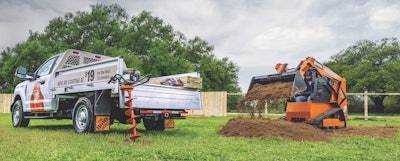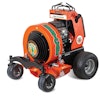
Renting tools and equipment can be extremely beneficial. It can save you money, help you save on space, and give you an opportunity to try new products before making the decision to buy. One benefit that is often overlooked is the positive impact renting equipment can have on the environment. In today’s climate, sustainability is becoming more and more important. In fact, according to a recent study published by The Wharton School of the University of Pennsylvania, consumers from every generation are going out of their way to use products and services that are more sustainable or environmentally friendly.
Inherently, tool and equipment rentals align with this shift toward environmental conservation. The rental business model allows the equipment to be used more efficiently, helping to reduce carbon emissions and minimizing the negative environmental impact. By choosing to rent equipment, you are also demonstrating your commitment to sustainability to your clients. Here are a few ways that renting can be better for the environment.
Eliminate excess
When you rent a tool, you are essentially sharing that tool with other pros. That one tool helps hundreds of people, optimizing its value and utilization. This means that fewer products are being purchased, stored and ultimately discarded. Take a tiller, for example. Most people use this product once per year. By purchasing the tiller, a consumer incurs the full cost of the tiller, including storage and maintenance, plus filling and emptying the fuel every year. That tiller may only be used 10 to 20 times over a 10-year period. A rental tiller, on the other hand, is rented out about 25 times per season at a rental center. We’ll maintain that piece of equipment for five years, meaning that one tiller is being used 125 times. Consider the carbon footprint required to manufacture that same number of tools required if each of our rental customers purchased a tiller of their own. We’re potentially satisfying hundreds of customers with just one piece of equipment.
Promote sustainability
Some state and local governments have enacted laws banning gas-powered equipment, making it even more important for retailers to offer acceptable alternatives. Manufacturers are constantly looking for ways to improve their product offerings to abide by these new rules and to develop innovative products for both retailers and rental companies to stock their shelves with. On the rental side, rental houses are bringing in more battery-powered tools to provide the right options to not only meet these new regulations but to also support consumer demand for the products.
Reusability
Rental companies aim to take meticulous care of their product inventory. This not only extends the equipment lifecycle but also provides an opportunity for resale when the equipment’s rental life is complete. If a product is not suitable for resale, it is usually able to be sourced for parts for use on other units, further extending the life of the product. Not only is this an additional revenue stream for the rental company, but it allows customers to purchase well-maintained tools and equipment at discounted prices.
Size can come into play, too. Going back to our tiller example, perhaps you do own that tiller because you do a lot of landscaping work, but suppose you need something just a bit larger for a new job. Instead of buying a brand-new piece of equipment, use a rental to finish your job. You’ll save time and money, and you’ll be acting in the best interest of the planet.
Renting equipment can help individuals easily reach their sustainability goals and assist in reducing the overall carbon footprint of their company. As laws change and environmental regulations get more rigorous, rental companies are going above and beyond to work with both their suppliers and their customers to continue to offer sustainable options throughout their footprint.





















